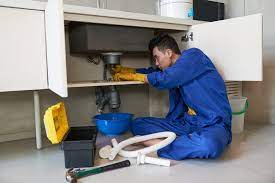Water damage caused by flooding or leaks is a common problem for homeowners. While visible signs of water damage, such as wet carpets and plumbing leaks, are often addressed quickly, there is a hidden danger that can go unnoticed: mold growth. Mold can grow quickly in damp and humid conditions, posing serious health risks to both your family and your home. In this blog, we will discuss the significance of timely mold testing following flooding or water leaks, as well as how it can help protect your health and property.
Understanding Mold’s Rapid Growth
Mold is a fungus that thrives in moist conditions. When your home experiences flooding, water leaks, or high humidity, it creates the ideal environment for mold to thrive. Mold spores, which are ubiquitous in the environment, can begin to grow and reproduce rapidly in these conditions.
Mold can spread within 24 to 48 hours of taking hold. It multiplies by releasing tiny spores into the air, which settle on surfaces and multiply further. Mold can hide behind walls, beneath flooring, in ceilings, and even in your HVAC system’s air ducts. Mycotoxins, which are harmful substances that can cause health problems when inhaled or touched, are released as it spreads.
Mold Exposure Can Cause Health Problems
Mold exposure can have a variety of negative health effects on people, ranging from mild to severe, depending on factors such as the type of mold and the duration and intensity of exposure. Mold exposure is associated with the following health problems:
1. Respiratory Problems: Mold spores can cause respiratory symptoms such as coughing, wheezing, sneezing, and nasal congestion. Asthmatics and allergy sufferers may see their symptoms worsen.
2. Skin Irritation: Mold contact can cause skin irritation, rashes, and itching.
3. Irritation of the Eyes and Throat: Mold exposure can cause red, itchy eyes and a sore throat.
4. Headaches: When exposed to mold, some people may experience persistent headaches.
5. Fatigue: Mold exposure can cause fatigue and a general sense of malaise.
6. Sinus Infections: Prolonged mold exposure can increase the risk of sinus infections and aggravate pre-existing sinus conditions.
7. Allergic Reactions: Mold can cause allergic reactions in some people, resulting in more severe symptoms such as difficulty breathing and chest tightness.
8. Exacerbation of Respiratory Conditions: For people who already have a respiratory condition, such as asthma, mold exposure can aggravate symptoms and lead to severe asthma attacks.
The Importance of Mold Testing on Time
Given the health risks of mold exposure, it is critical to prioritize mold testing following any water-related incident in your home, such as flooding, leaks, or excessive moisture buildup. Here are a few of the reasons why timely mold testing is critical:
1. Prompt Detection
Mold is frequently hidden from view, lurking behind walls or within your home’s structure. Mold can be detected even before it becomes visible if mold testing is performed immediately following a water-related incident. Early detection allows for faster resolution and keeps the problem from worsening.
2. Correct Evaluation
Professional mold testing gives you an accurate picture of the amount and type of mold in your home. This data is critical for determining the best remediation strategy and ensuring that all affected areas are thoroughly treated.
3. Health Protection
Mold can have serious health consequences, especially for people who have allergies, asthma, or weakened immune systems. By identifying and addressing mold issues as soon as possible, timely mold testing helps protect your family’s health.
4. Avoiding Property Damage
Mold, in addition to posing health risks, can cause significant damage to the structure and contents of your home. Mold can deteriorate building materials, stain surfaces, and destroy personal belongings. You can avoid costly property damage by testing for mold early on.
5. Mindfulness
Knowing your home is mold-free gives you peace of mind and allows you to live in a safe and healthy environment. It also removes concerns about hidden mold issues that could harm your family’s health.
Mold Testing Procedures
Several key steps are involved in professional mold testing:
1. Inspection: A certified mold inspector will look for signs of water damage and mold growth in your home. To identify problem areas, they will use specialized equipment such as moisture meters and thermal imaging cameras.
2. Air Sampling: Mold spores are microscopic and can be found in the air even when no visible mold is present. Air sampling entails taking air samples from your home to determine the concentration of mold spores.
3. Surface Sampling: Surface sampling may be used to identify the type of mold and its concentration in cases where visible mold is present. This aids in determining the severity of the problem.
4. Laboratory Analysis: During the inspection, samples are collected and sent to a certified laboratory for analysis. The laboratory results provide a comprehensive report on the type and concentration of mold present.
5. Remediation Recommendations: Based on the findings, the mold inspector will make remediation recommendations, including the extent of the problem and the necessary mold removal steps.
6. Mold Remediation and Prevention: Once the extent and type of mold have been determined, remediation measures can be put in place to remove the mold and prevent its recurrence. Mold removal, dehumidification, and addressing the underlying moisture source may all be required.
Conclusion
Mold testing is critical following any water-related incident to protect your health and your home from the negative effects of mold growth. Early detection enables prompt remediation, preventing additional property damage and health risks. If you suspect mold in your home or have suffered water damage, don’t put off professional mold testing. It’s a proactive step toward ensuring your family’s safety and mold-free living environment. For more information on mold testing and remediation, please visit https://restoredair.com/.

